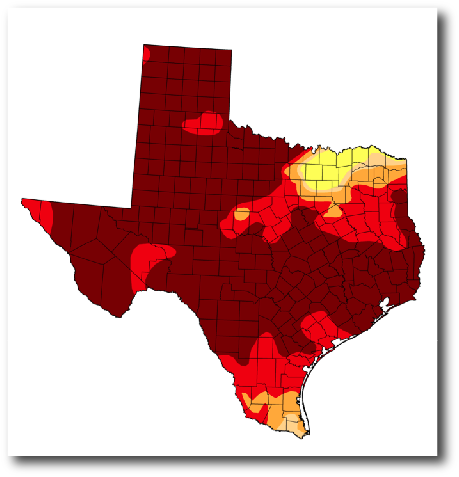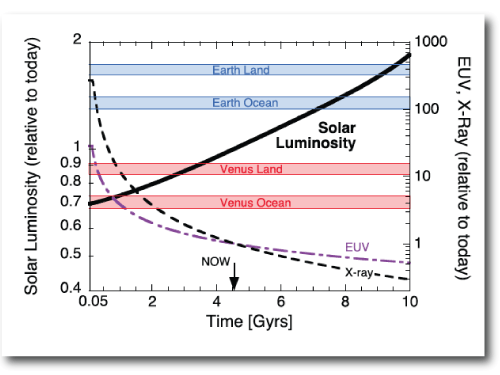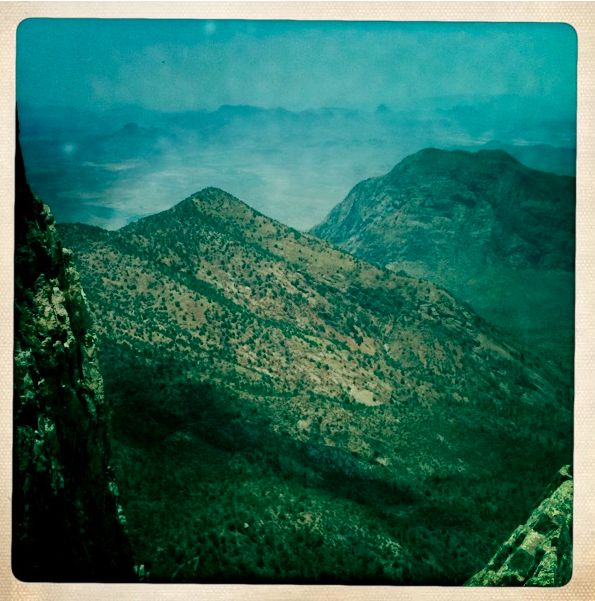
A few weeks ago, I was in West Texas, seeing first-hand places that were familiar only from articles and maps. Marfa, Big Bend, the Glass Mountains.

Image Source.
The landscape west of the Pecos River, dry to begin with, is in the grip of exceptional drought. The temperature was over 100 degrees Fahrenheit, and there was a hot incessant wind. From a ridgeline near the top of an eroded volcanic intrusion in the Chisos Mountains, dry basins and ranges extended into the infinite hazy distance. It was easy to imagine that the Earth had lost its oceans, and had become a desert planet, with isolated pockets of life clinging to retain the veneer of a respectable planetary habitability.
There’s a recent, highly engaging article by Kevin Zahnle and collaborators (Abe et al. 2011) that argues that such a world might be better suited than the present-day Earth at staving off the biosphere-terminating ravages of the runaway greenhouse effect. Desert, or “land” planets keep their stratospheres dry, which allows them to better retain what water they do have, and land planets can more effectively re-radiate infrared radiation into space at given surface atmospheric pressure, allowing a cooler surface temperature at a given stellar flux. It cools down at night in the desert.

Abe et al.’s global climate models indicate that Earth will cease to be habitable in 2.5 Billion years. In the absence of oceans, on the other hand, they find that habitability would be extended by another 2 to 2.5 billion years. And provocatively, if Venus started out as a land planet, it may have been habitable as recently as a billion years ago.
My guess is that nearly everyone who frequents oklo.org has read and liked Frank Herbert’s 1965 science fiction classic Dune, which is folded into the introduction of Abe et al.’s paper:
We can imagine another kind of habitable planet that has only a small amount of water and no oceans; it might be covered by vast dry deserts, but it might also have locally abundant water. We call such a dry planet a ‘‘land planet.’’ The fictional planet known as Arrakis or Dune (Dune, Herbert, 1965) provides an exceptionally well-developed example of a habitable land planet. In its particulars, Dune resembles a bigger, warmer Mars with a breathable oxygen atmosphere. Like Mars, Dune is depicted as a parched desert planet, but there are signs that water flowed in the prehistoric past. Dune has small water ice caps at the poles and more extensive deep polar aquifers. The tropics are exceedingly dry, but the polar regions are cool enough and moist enough to have morning dew.


Is there any way to tell when Venus lost all of its water? If I recall, the D/H is something like 100 times Earth, implying that it lost 99% of its atmospheric H. Surely that can’t all be from the lack of magnetic field…
Runaway greenouse effect on Venus boils oceans –> lot’s of water vapour in upper atmosphere get photodissociated (no magnetic feild would help) –> Hydrogen atoms to light to be retained by gravity –> water gone.
Hmm. Thats odd. Isn’t a low water world more likely to lock its crustal plates and hence end Tectonics. Without Tectonics minerals get locked away and cause problems such as Venus episodic volcanic re-surfacing. That should end any chance of life right there. Wonder if that was addressed.